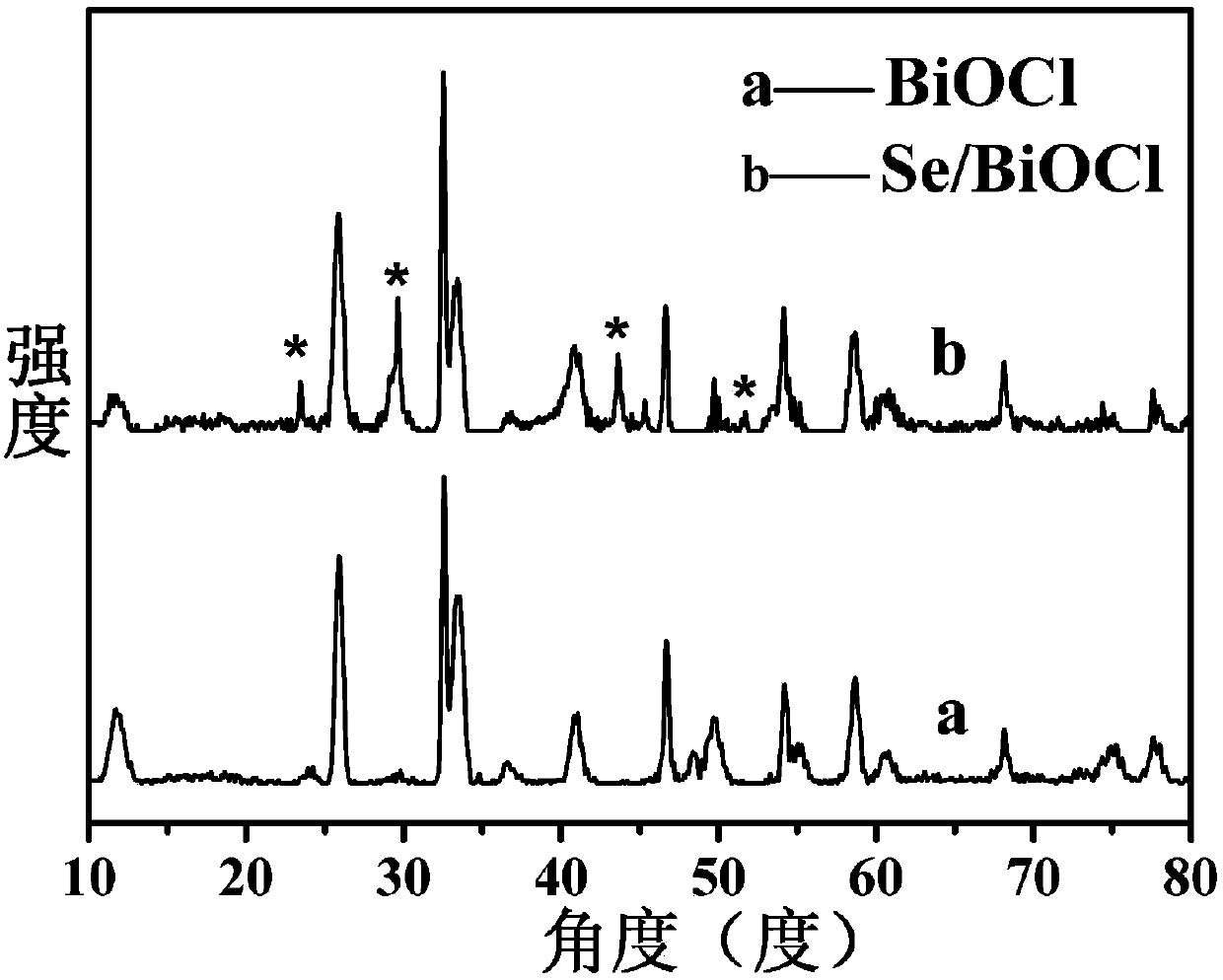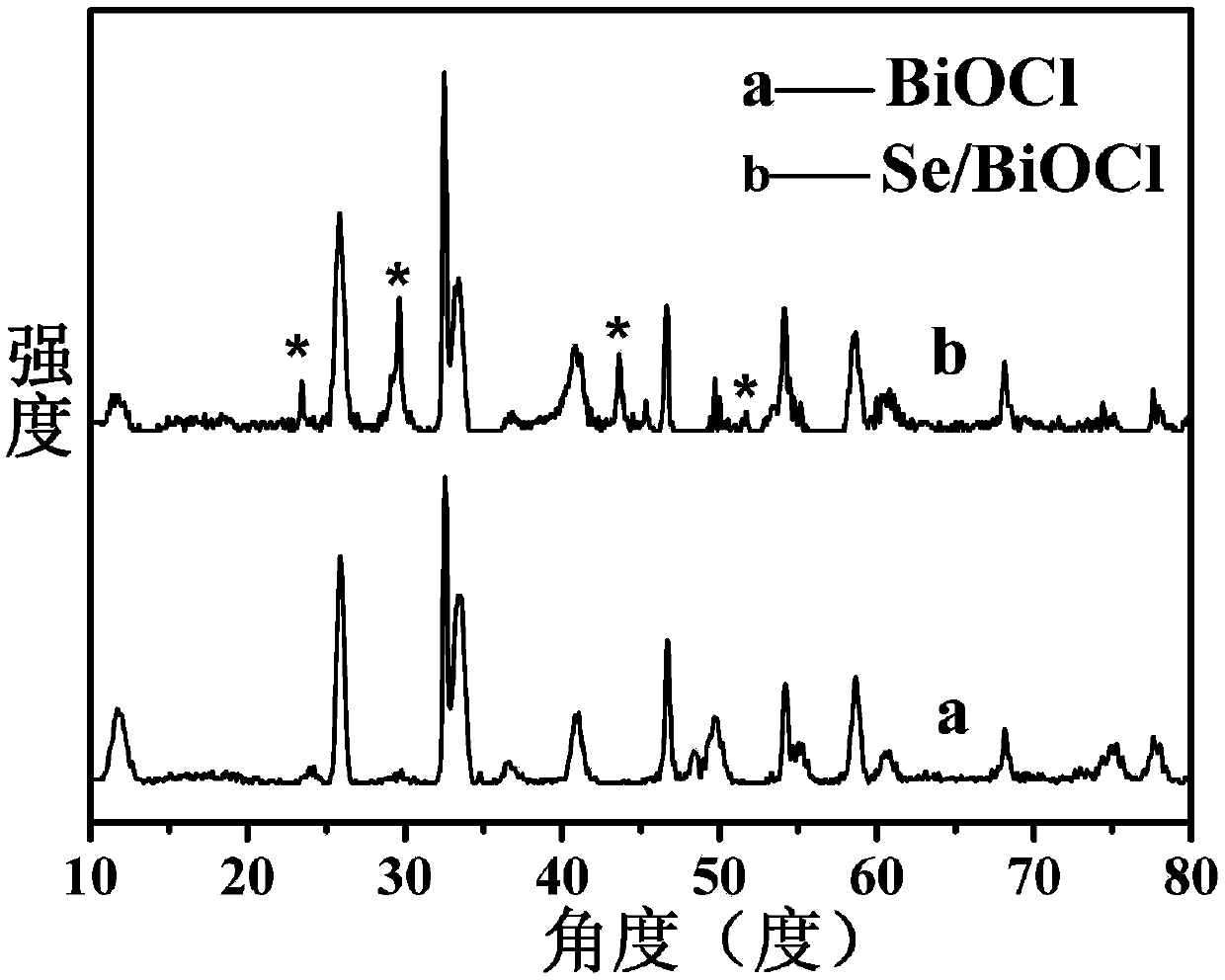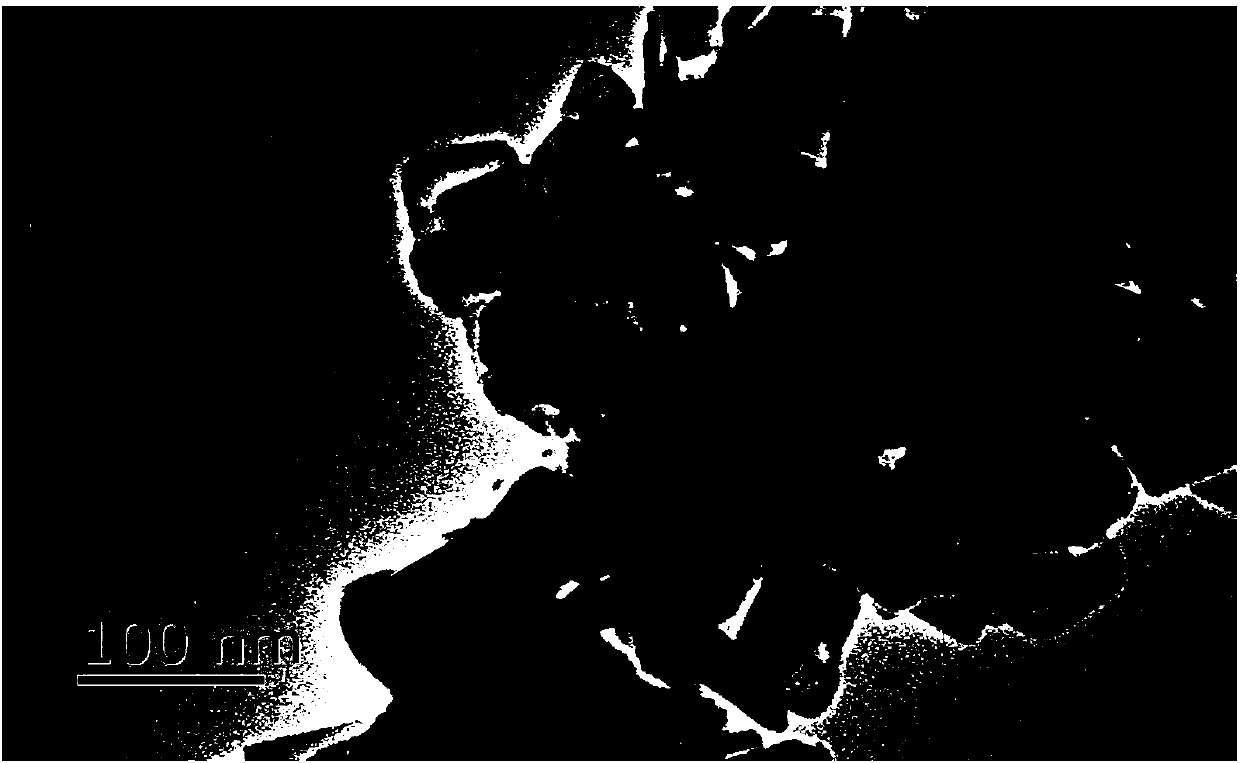Preparation and application of t-Se rod supported BiOCl ultrathin sheet composite photocatalyst
A composite light and catalyst technology, applied in physical/chemical process catalysts, chemical instruments and methods, chemical/physical processes, etc., can solve the problems of limiting the effective development of photocatalytic performance, good photodegradation ability, etc., and improve visible light absorption. The effect of uniform capacity, size, and easy operation
- Summary
- Abstract
- Description
- Claims
- Application Information
AI Technical Summary
Problems solved by technology
Method used
Image
Examples
Embodiment 1
[0034] (1) Preparation of CdSe quantum dots:
[0035] First weigh 0.4567g of cadmium chloride (CdCl 2 2.5H 2 O) be dissolved in the there-necked flask that contains 200ml deionized water, logical N 2 Deoxygenate for half an hour; then add 230mL of stabilizer methacrylic acid, and adjust the pH of the solution to 7 with 1mol / L sodium hydroxide solution after stirring; at the same time, put 0.1053g of Se powder and 0.3160g of sodium borohydride In the beaker, add 7mL deionized water to dissolve completely, and pass N 2 Protect against oxidation until a white precipitate appears in the reaction, absorb the upper clear liquid, and add it dropwise to the above three-necked flask solution; condense and reflux, react in a water bath at 80°C for 4 hours, take it out and cool it naturally, centrifuge the solution, and use deionized water, anhydrous Wash with water and ethanol three times respectively, and dry in an oven at 60° C. for 6 hours to obtain CdSe quantum dots.
[0036] (2...
Embodiment 2
[0040] (1) Preparation of CdSe quantum dots:
[0041] First weigh 0.4567g of cadmium chloride (CdCl 2 2.5H 2 O) be dissolved in the there-necked flask that contains 200ml deionized water, logical N 2 Deoxygenate for half an hour; then add 230 μL of stabilizer methacrylic acid, and adjust the pH of the solution to 7 with 1mol / L sodium hydroxide solution after stirring; at the same time, put 0.1053g of Se powder and 0.3160g of sodium borohydride In the beaker, add 7mL deionized water to dissolve completely, and pass N 2 Protect against oxidation until a white precipitate appears in the reaction, absorb the upper clear liquid, and add it dropwise to the above three-necked flask solution; condense and reflux, react in a water bath at 80°C for 4 hours, take it out and cool it naturally, centrifuge the solution, and use deionized water, anhydrous Wash with water and ethanol three times respectively, and dry in an oven at 60° C. for 6 hours to obtain CdSe quantum dots.
[0042] (...
Embodiment 3
[0046] (1) Preparation of CdSe quantum dots:
[0047] First weigh 0.4567g of cadmium chloride (CdCl 2 2.5H 2 O) be dissolved in the there-necked flask that contains 200ml deionized water, logical N 2 Deoxygenate for half an hour; then add 230 μL of stabilizer methacrylic acid, and adjust the pH of the solution to 7 with 1mol / L sodium hydroxide solution after stirring; at the same time, put 0.1053g of Se powder and 0.3160g of sodium borohydride In the beaker, add 7mL deionized water to dissolve completely, and pass N 2 Protect against oxidation until a white precipitate appears in the reaction, absorb the upper clear liquid, and add it dropwise to the above three-necked flask solution; condense and reflux, react in a water bath at 80°C for 4 hours, take it out and cool it naturally, centrifuge the solution, and use deionized water, anhydrous Wash with water and ethanol three times respectively, and dry in an oven at 60° C. for 6 hours to obtain CdSe quantum dots.
[0048] (...
PUM
 Login to View More
Login to View More Abstract
Description
Claims
Application Information
 Login to View More
Login to View More - R&D
- Intellectual Property
- Life Sciences
- Materials
- Tech Scout
- Unparalleled Data Quality
- Higher Quality Content
- 60% Fewer Hallucinations
Browse by: Latest US Patents, China's latest patents, Technical Efficacy Thesaurus, Application Domain, Technology Topic, Popular Technical Reports.
© 2025 PatSnap. All rights reserved.Legal|Privacy policy|Modern Slavery Act Transparency Statement|Sitemap|About US| Contact US: help@patsnap.com



